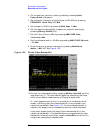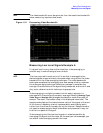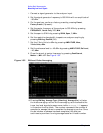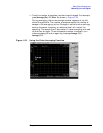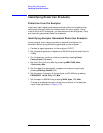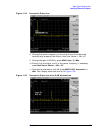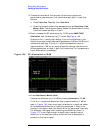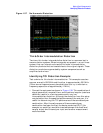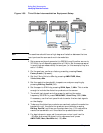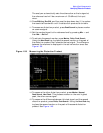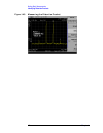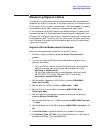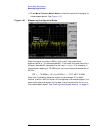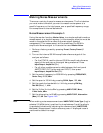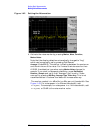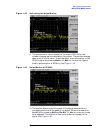
46 Chapter 1
Making Basic Measurements
Identifying Distortion Products
Figure 1-38 Third-Order Intermodulation Equipment Setup
NOTE The combiner should have a high degree of isolation between the two
input ports so the sources do not intermodulate.
2. Set one source (signal generator) to 300 MHz and the other source to
301 MHz, for a frequency separation of 1 MHz. Set the sources equal
in amplitude as measured by the analyzer (in this example, they are
set to −5dBm).
3. On the analyzer, perform a factory preset by pressing Preset,
Factory Preset (if present).
4. Set the Y-Axis Units to dBm by pressing AMPLITUDE, More,
Y-Axis Units,
dBm.
5. Set the resolution bandwidth to spectrum analyzer coupling by
pressing BW/Avg, Res BW (SA).
6. Set the span to 5 MHz by pressing SPAN, Span, 5, MHz. This is wide
enough to include the distortion products on the screen.
7. Tune both test signals onto the screen by setting the center
frequency 300.5 MHz, press FREQUENCY, Center Freq, 300.5, MHz.
If necessary, use the front-panel knob to center the two test signals
on the display.
8. To be sure the distortion products are resolved, reduce the resolution
bandwidth until the distortion products are visible by pressing
BW/Avg, Res BW, and then use the step-down key (↓) to reduce the
resolution bandwidth until the distortion products are visible.
9. For best dynamic range, set the maximum mixer input level to
−30 dBm and move the signal to the reference level: press
AMPLITUDE, More, Max Mixer Lvl, –30, dBm.



